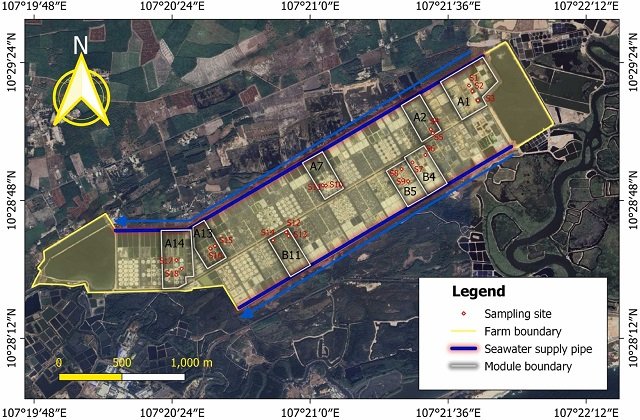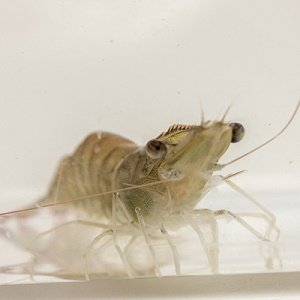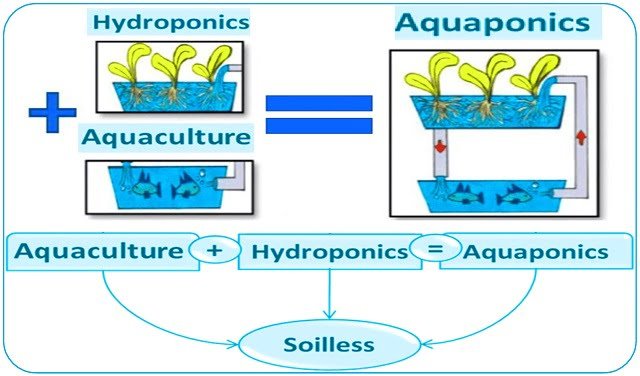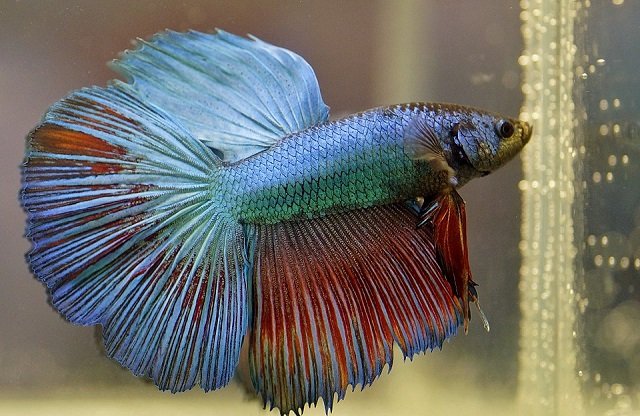
Water quality is a critical factor in aquaculture systems, directly influencing the health and productivity of aquatic species. In shrimp farming, maintaining optimal water conditions is essential to prevent adverse events and ensure sustainable production.
A team of researchers from the Industrial University of Ho Chi Minh City, Nguyen Tat Thanh University, Minh Phu Corporation Company, and Saigon University has developed a new water quality index (WQI) using advanced multivariate statistical techniques, including principal component analysis (PCA) and a fuzzy inference system, to assess water quality in two distinct shrimp farming techniques.
This innovative approach provides a solid framework for real-time monitoring and management, offering valuable insights to improve shrimp production under different environmental conditions.
The importance of water quality in aquaculture
Aquaculture systems are highly sensitive to changes in water quality, which can affect shrimp growth, survival, and overall health.
Key parameters such as temperature, pH, salinity, dissolved oxygen (DO), and nutrient levels play a crucial role in maintaining a balanced aquatic environment. However, the complexity of these interactions makes comprehensive water quality assessment challenging.
Traditional methods often rely on individual parameter measurements, which may not capture the holistic picture of water conditions. This study addresses this limitation by integrating multiple parameters into a single, cohesive index.
Developing a comprehensive water quality index
The study published in the journal Desalination and Water Treatment analyzed 1179 daily water samples from shrimp farms employing two cultivation techniques: one-stage and two-stage systems.
The researchers measured seventeen critical water quality parameters, including temperature, pH, salinity, total dissolved solids (TDS), turbidity, DO, transparency, alkalinity, hardness, total ammonia nitrogen (TAN), nitrite, nitrate, phosphate, silica, calcium (Ca), magnesium (Mg), and potassium (K). These parameters were selected based on their known impact on shrimp health and water quality.
Stay Always Informed
Join our communities to instantly receive the most important news, reports, and analysis from the aquaculture industry.
Principal component analysis
To identify the most influential factors, the researchers applied principal component analysis (PCA), a multivariate statistical technique that reduces the dimensionality of data while preserving its essential structure. Principal component analysis revealed that salinity and silica were the main contributors to water quality deterioration. These findings highlight the importance of closely monitoring these parameters to prevent adverse effects on shrimp farming.
Fuzzy inference system
The study employed a fuzzy inference system to develop the water quality index (WQI), a computational approach that mimics human reasoning to handle uncertainty and imprecision in data. This system integrates multiple water quality parameters into a single index, providing a clear and actionable metric for farmers. WQI values ranged from 0 to 1, with higher values indicating better water quality.
The results showed clear differences between the two cultivation techniques. The two-stage system had a WQI of 0.70 during the grow-out period and 0.64 during the nursing period, compared to 0.80 and 0.76 for the one-stage system, respectively. This suggests that the one-stage technique may offer better water quality management under the studied conditions.
Seasonal variations in water quality
The study also examined the impact of seasonal changes on water quality. The water quality index was significantly higher during the rainy season (0.69) compared to the dry season (0.77). This seasonal variation underscores the need for adaptive management strategies to address fluctuating environmental conditions. For example, increased rainfall may dilute pollutants and improve water quality, while dry conditions could exacerbate salinity and nutrient concentrations.
Implications for shrimp farming
The development of this new water quality index represents a significant advancement in aquaculture management. By providing a real-time assessment of water quality, the fuzzy inference system enables farmers to make timely interventions, reducing the risk of adverse events and improving shrimp production. The integration of PCA further refines the index by identifying key parameters that require close monitoring.
For shrimp farmers, this study offers practical insights to optimize water quality management. The one-stage cultivation technique, with its higher water quality index values, may be more suitable for maintaining stable water conditions. Additionally, seasonal variations highlight the importance of adjusting management practices to align with environmental changes.
Conclusion
This study demonstrates the effectiveness of combining multivariate statistical techniques with a fuzzy inference system to develop a comprehensive water quality index for shrimp farming. By identifying salinity and silica as critical factors and highlighting the impact of seasonal changes, the research provides a valuable tool for improving aquaculture management.
For aquaculture practitioners, adopting this water quality management framework can lead to more informed decision-making, ultimately contributing to the long-term sustainability of shrimp farming practices.
Contact
Ha Manh Bui
273 An Duong Vuong Street, District 5, Ho Chi Minh City 700000
Vietnam.
Email: manhhakg@sgu.edu.vn
Reference (open access)
Do, D. D., Le, A. H., Vu, V. V., Le, D. A. N., & Bui, H. M. (2025). Evaluation of water quality and key factors influencing water quality in intensive shrimp farming systems using principal component analysis-fuzzy approach. Desalination and Water Treatment, 321, 101002. https://doi.org/10.1016/j.dwt.2025.101002
Editor at the digital magazine AquaHoy. He holds a degree in Aquaculture Biology from the National University of Santa (UNS) and a Master’s degree in Science and Innovation Management from the Polytechnic University of Valencia, with postgraduate diplomas in Business Innovation and Innovation Management. He possesses extensive experience in the aquaculture and fisheries sector, having led the Fisheries Innovation Unit of the National Program for Innovation in Fisheries and Aquaculture (PNIPA). He has served as a senior consultant in technology watch, an innovation project formulator and advisor, and a lecturer at UNS. He is a member of the Peruvian College of Biologists and was recognized by the World Aquaculture Society (WAS) in 2016 for his contribution to aquaculture.




